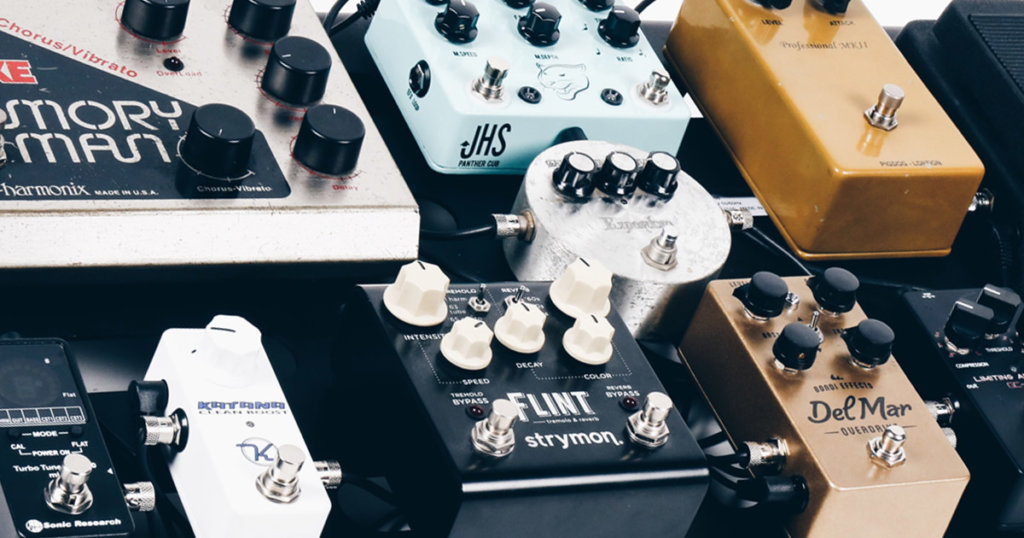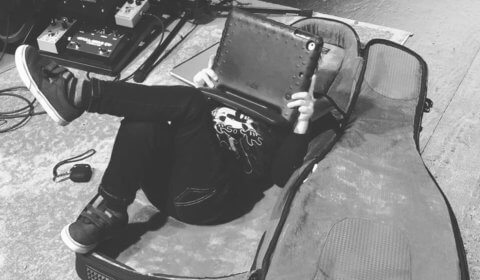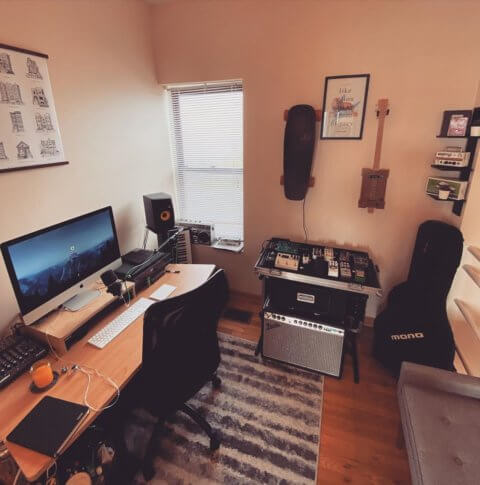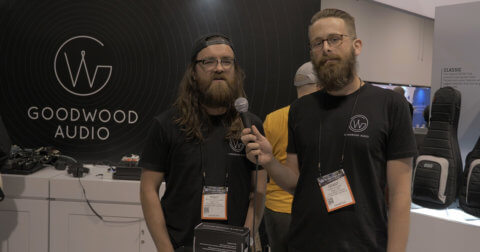Few things in life are more enjoyable than listening to a great sounding guitar. When crafting your sound, the type of guitar, wood, pickups and your playing style are all very important considerations. Ultimately, many guitarists take it a step further and define their signature sound by combining different guitar pedals. While technically there isn’t a “wrong” way to craft your sound, a proper pedal chain (or signal path) is important to get the most out of your pedals.
Here’s a quick guide to give you an idea of the typical path followed when setting up and arranging your guitar pedals in search of your sound.
The conventional order
A key point is that the position of each pedal in your chain is incredibly important. Most pedals usually alter the sound and effect of the pedal or pedals that come before them in the signal path, therefore some pedals will work better in certain positions than others.
A general rule of thumb is that your wah or filter pedals, like an envelope filter, should go first. Filter effects respond to your picking dynamics, so you don’t want compressors or gain pedals limiting those dynamics.
Next, compressors are usually added to limit the dynamic range of your signal. Simply put, a compressor helps make loud sounds quieter, and quiet sounds louder—so your sound is dynamically consistent and stays within a certain range.
Gain pedals, or pedals that amplify or add significant noise (like overdrives, distortion, fuzz, and boost), are usually placed after the compressor. This ensures that the noise or hiss caused by gain pedals aren’t affected by the compressor, which can bring harsher signals to the forefront.
Once the “core” of your sound—shaped by your filters, compressors and gain pedals—is chained in, this is where many guitarists prefer to add a modulation effect like chorus, flanger, tremolo, or vibrato. These pedals may create a slight variation in pitch or help create a richer tone, but do not significantly affect your core sound.
Last, time-based effects like delay, echo and reverb pedals are added. These effects change the timings and repetitions of your sound, but do not affect its overall voice in a major way.
Finally, get that sound heard—plug the whole thing into an amp!
To recap:
- Guitar -> wah -> compressors -> gain pedals -> modulation -> time-based effects -> Amplifier
Learn the rules, then break them
While there are no hard and fast rules in the world of pedal sound design, these are a few solid beginner’s tips that should give you a great place to start. Of course, after you’ve got the hang of it, don’t be afraid to experiment to find your sonic identity. For example, Eddie Van Halen used to place a phaser (modulation) BEFORE his drive (gain), giving him his trademark tone (hear Atomic Punk). Have some fun finding yours!
Also remember, a great pedalboard can help you organize and manage your pedal setup. Not to mention that they make your pedals look great too!



